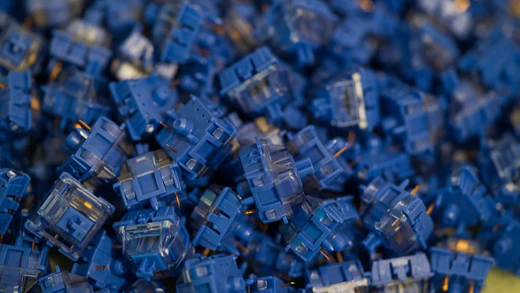Mechanical keyboards are a great way to type on a keyboard that has more features than your standard model. This article will explain how to choose the right switches for your mechanical keyboard, as well as discuss some of the factors that can affect their lifespan.
The switch is the part of the keyboard that lets you make the connection between the key and the computer.
The switch is the part of the keyboard that lets you make the connection between the key and the computer. It's what makes a mechanical keyboard work, and it's also what makes a mechanical keyboard feel different from a regular keyboard.
The term "mechanical" refers to how this switch works—it uses metal springs, like old typewriters did (and still do). Mechanical switches are more durable than rubber dome or membrane options because they don't rely on rubber to make contact with their keys' bottoms; instead, they have metal balls in them that press against each other when pressed down at equal force by your fingers.

There are several different types of mechanical switches, each different in their feel and function.
There are several different types of mechanical switches, each different in their feel and function. Cherry MX switches are the most common type of mechanical switch used in keyboards. They come in various colors: Red, Blue, Brown and Black (also called Cherry Light). The Cherry MX switches have a low actuation force (the amount it takes to actuate the key) and provide tactile feedback while typing by creating audible clicking sounds as you press on them.
Mechanical switches have varying levels of tactility and resistance to wear over time.
Mechanical switches have varying levels of tactility and resistance to wear over time. Cherry MX Red has the lowest actuation force, but has a more tactile feel to it than Cherry MX Blue. The medium actuation force gives you a similar tactile experience as Cherry MX Red, but with less of that “clicky” sound you get from typing on an actual mechanical keyboard.

If you're looking for an ultra-responsive switch that's going to keep up with your fast typist fingers, consider using Gateron Browns (or any other clicky switch) instead of rubber dome ones like Cherry Blues or Black Alps Blacks
Cherry MX Red - Lowest actuation force, but has a more tactile feel to it.
The Cherry MX Red switch has been the most popular switch for mechanical keyboards since it was released in 2005. The mechanism that powers this switch is similar to what you'd find in an acoustic guitar or piano—the keycap presses down on metal bars inside the switch, which then activates an electrical circuit that sends signals to your computer's keyboard driver.
The result is a low actuation force (that means how hard it takes to press down) but high tactile feedback; when you type on a mechanical keyboard with this type of keycap, you'll feel each individual keypress distinctly as opposed to typing on a rubber dome style keyboard where each click feels like one big clunk together.
Cherry MX Blue - Medium actuation force, gives a tactile feel but not as much as Red.
Blue switches have a medium actuation force, but not as much as Red. The tactile feel is also good and you can tell when it's pressed.
The most common switch type used in mechanical keyboards is the Cherry MX Blue switch because of its excellent performance characteristics and high reliability rate (over 60%).
Cherry MX Brown - High actuation force, light tactile response but not as much as Red or Blue.
-
Cherry MX Browns are a high actuation force switch, meaning that they have a light tactile response and require more force to actuate than other Cherry MX switches.
-
The higher the actuation force, the faster you can type—but also means that typing on these switches will be harder and more uncomfortable over time. This is because there's less give in your fingers as they hit the keyboard (aka "light" tactile response).
-
If you're looking for a fast-paced gaming experience with mechanical keyboards, then this might not be ideal for you since it may take some getting used to if used daily in this way.
Conclusion
As you can see, each mechanical switch has its own unique characteristics. They’re all more or less equally good, but they also have different features that can make them better suited for certain uses.
If you want an ideal keyboard for gaming and typing, then your best bet would be a Cherry Red or Blue switch with tactile feedback and a compact design. You could also choose brown switches if you have really large hands or don’t care about having full-size keys (or if your fingers are especially small!). But remember: every type of keyboard out there comes with some compromises in terms of comfort or accuracy - so make sure to take these into account before making any final decisions!


